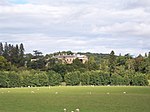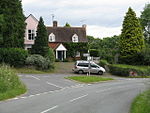Suckley railway station
Beeching closures in EnglandDisused railway stations in WorcestershireFormer Great Western Railway stationsPages with no open date in Infobox stationRailway stations in Great Britain closed in 1964 ... and 3 more
Railway stations in Great Britain opened in 1878Use British English from November 2022West Midlands (region) railway station stubs
Suckley railway station was a station in Suckley, Worcestershire, England. The station was opened on 1 March 1878 and closed on 7 September 1964.
Excerpt from the Wikipedia article Suckley railway station (License: CC BY-SA 3.0, Authors).Suckley railway station
Malvern Hills
Geographical coordinates (GPS) Address Nearby Places Show on map
Geographical coordinates (GPS)
| Latitude | Longitude |
|---|---|
| N 52.1835 ° | E -2.4106 ° |
Address
WR6 5QQ Malvern Hills
England, United Kingdom
Open on Google Maps








